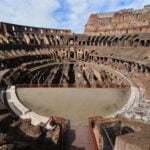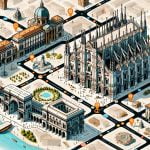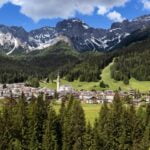Milan, Italy is not just a city; it’s a cultural and fashion capital that draws visitors from around the world. From iconic landmarks like the Duomo to masterpieces such as Leonardo da Vinci’s Last Supper, Milan offers a blend of history, art, and style that is truly unique. If you’re planning a trip to this dynamic city, there are some essential things you should know to make your visit unforgettable.
Known for its vibrant fashion scene and impeccable taste, Milan is a must-visit destination for fashion enthusiasts and culture lovers alike. With its eclectic mix of old-world charm and modern sophistication, the city offers a rich tapestry of experiences waiting to be explored. Whether you’re interested in exploring historic sites, indulging in Italian cuisine, or shopping at high-end boutiques, Milan has something for everyone.
In this comprehensive guide on what to know when traveling to Milan Italy, we’ll cover everything from top attractions and cultural etiquette to packing tips and day trips from the city. By equipping yourself with the right information and insider tips, you can ensure a smooth and memorable trip to Milan that captures the essence of this enchanting destination. So pack your bags, get ready to immerse yourself in the allure of Milan.
Top Attractions in Milan
Milan, Italy is a city that seamlessly blends historical landmarks with modern attractions, offering visitors a unique mix of experiences. One of the top attractions in Milan is the awe-inspiring Duomo di Milano, the city’s cathedral that took nearly six centuries to complete. The intricate Gothic architecture and stunning views from the rooftop make it a must-visit for anyone traveling to Milan.
Another iconic site is Leonardo da Vinci’s Last Supper, located in the refectory of the Convent of Santa Maria delle Grazie. This famous mural painting is a masterpiece that continues to captivate art enthusiasts from around the world.
Aside from these well-known attractions, Milan also offers a plethora of museums, such as the Pinacoteca di Brera and Sforza Castle, where visitors can immerse themselves in art and history. The Galleria Vittorio Emanuele II, one of the world’s oldest shopping malls, is another popular spot for both shopping and sightseeing. Here, you can shop for luxury brands while admiring the stunning glass dome and intricate mosaics on the floor.
When planning your visit to these attractions in Milan, it is essential to consider factors such as ticket availability and opening hours. Many popular sites require advance booking, especially during peak tourist seasons. Additionally, some attractions may have specific dress codes or restrictions on photography inside their premises. Being aware of these details will help you make the most out of your visit and ensure a smooth and enjoyable experience in Milan.
Weather and Best Time to Visit Milan
Milan, Italy experiences a humid subtropical climate with hot summers and cold, foggy winters. The best time to visit Milan is during the spring months of April and May or the autumn months of September and October. During these times, the weather is mild, the crowds are fewer, and you can enjoy pleasant temperatures for exploring the city. However, if you’re looking to experience Milan’s famous fashion scene during Fashion Week, plan your visit in February or September.
Weather in Milan
The summers in Milan can get quite hot with temperatures rising above 30°C (86°F) in July and August. Winters are cold and damp with temperatures dropping to around 0°C (32°F) in January. It is advisable to pack accordingly based on the season you plan on visiting – light clothing for summer trips and warm layers for winter visits. Don’t forget an umbrella as rain showers are common throughout the year.
Best Time to Visit
If you want to avoid the peak tourist season in Milan, it’s best to plan your trip during the shoulder seasons of spring and autumn. During these times, you can enjoy pleasant weather for exploring attractions like the iconic Duomo di Milano or taking a leisurely stroll through Sforza Castle’s expansive grounds.
Additionally, hotel rates are more affordable, and popular restaurants are less crowded compared to the summer months. Keep in mind that major holidays like Christmas and Easter can also be busy periods in Milan so plan accordingly.
Whether you prefer sunny days for outdoor activities or cooler temperatures for sightseeing, understanding the weather patterns and choosing the right time to visit Milan can enhance your travel experience in this stylish Italian city. By planning your trip wisely, you can make the most out of your visit and create unforgettable memories that will last a lifetime.
Getting Around Milan
Milan, Italy is a bustling city with so much to see and do, making it important for travelers to have a good understanding of how to get around efficiently. Public transportation in Milan is a convenient and affordable way to explore the city. The city boasts an extensive public transportation system that includes buses, trams, and the metro.
Visitors can purchase single tickets or day passes depending on the duration of their stay. Additionally, there are convenient bike-sharing services available for those who prefer cycling around the city.
Walking Tours
One of the best ways to truly immerse yourself in Milan’s vibrant atmosphere is by taking walking tours. Guided walking tours offer a unique perspective on the city’s history, architecture, and culture. Whether you choose to join a group tour or opt for a self-guided walk using online resources, exploring Milan on foot allows you to discover hidden gems and lesser-known attractions that may not be easily accessible by public transport.
Navigation Tips
When navigating Milan, it’s essential to familiarize yourself with key landmarks and main streets to avoid getting lost. The iconic Duomo di Milano cathedral serves as a central point of reference in the city center, making it easy to orient yourself.
It’s also helpful to have a map or navigation app handy to plan your route and make the most of your time exploring Milan. By mastering the public transportation system and embracing walking tours, you can navigate Milan with ease and make unforgettable memories during your visit.
Accommodation Options in Milan
When traveling to Milan, Italy, finding the right accommodation is essential to ensure a comfortable and enjoyable stay in this bustling city. Milan offers a variety of options for every type of traveler, from luxury hotels to budget-friendly hostels and trendy Airbnb apartments. Depending on your preferences and budget, you can choose the option that best suits your needs.
Luxury hotels in Milan offer top-notch amenities, impeccable service, and prime locations in the city center or near major attractions. These accommodations cater to travelers seeking a high level of comfort and luxury during their stay. On the other hand, budget travelers can opt for hostels in Milan, which provide affordable dormitory-style rooms or private rooms at a fraction of the cost of hotels. Hostels also offer communal spaces where guests can socialize and meet fellow travelers.
For those looking for a more local experience while traveling to Milan, Airbnb rentals are an excellent choice. By staying in an Airbnb apartment, you can immerse yourself in the everyday life of Milanese locals and enjoy a more personalized travel experience.
Additionally, Airbnb accommodations often come equipped with kitchens, allowing you to prepare your meals and save money on dining out during your trip. Overall, whether you choose a hotel, hostel, or Airbnb rental in Milan, there are plenty of options available to suit your travel style and preferences when visiting this vibrant Italian city.
Dining in Milan
Milan is not just a fashion capital but also a culinary paradise waiting to be explored. When it comes to dining in Milan, you will be treated to a diverse array of delicious Italian dishes that will tantalize your taste buds.
One of the must-try dishes in Milan is Risotto alla Milanese, a creamy and saffron-infused rice dish that originated in the city. Another iconic dish is Ossobuco, which consists of braised veal shanks served with a flavorful sauce.
In addition to traditional Milanese cuisine, the city offers a wide range of local restaurants where you can sample authentic dishes prepared with fresh and high-quality ingredients. From cozy trattorias serving homemade pasta to elegant Michelin-starred establishments offering innovative culinary creations, Milan has something to satisfy every palate. Be sure to explore the Brera district for charming cafes and trendy restaurants or visit the Navigli area for vibrant nightlife and a lively dining scene.
For travelers wondering what to know when traveling to Milan Italy in terms of dining etiquette, it’s important to note that Italians typically enjoy their meals at a leisurely pace, savoring each bite and engaging in lively conversations with dining companions. Tipping is not mandatory in Italy as a service charge is often included in the bill, but leaving some extra change as a token of appreciation is always welcome.
With its rich culinary heritage and vibrant food culture, Milan promises an unforgettable dining experience for visitors from around the world.
| Must-Try Italian Dishes | Local Restaurants |
|---|---|
| Risotto alla Milanese | Trattoria della Pesa |
| Ossobuco | Ristorante Da Giacomo |
Milan Fashion
When traveling to Milan, Italy, known worldwide as a fashion capital, shopping for designer brands and unique pieces is a must-do activity. The city is home to renowned fashion houses like Prada, Versace, and Dolce & Gabbana, making it a paradise for fashion enthusiasts. Whether you’re looking for high-end boutiques or vintage shops, Milan has something to offer every taste and budget.
One of the best places to indulge in luxury shopping is the Quadrilatero della Moda, also known as the Quadrilatero d’Oro or Golden Rectangle. This prestigious neighborhood is lined with high-end stores featuring the latest collections from top designers. Via Montenapoleone, Via della Spiga, Via Sant’Andrea, and Via Manzoni are the main streets in this fashion district where you can find haute couture garments and accessories.
If you prefer a more eclectic shopping experience, head to areas like Corso Como or Brera. These districts are known for their trendy boutiques, concept stores, and independent designers showcasing unique fashion pieces. From cutting-edge streetwear to handcrafted leather goods, exploring these neighborhoods will give you a glimpse into Milan’s diverse fashion scene.
| Milan Fashion Districts | Description |
|---|---|
| Quadrilatero della Moda | Home to high-end boutiques and luxury brands. |
| Corso Como | Known for trendy boutiques and concept stores. |
| Brera | Features independent designers and unique fashion pieces. |
Cultural Etiquette in Milan
When visiting Milan, Italy, it is essential to familiarize yourself with the cultural etiquette to ensure a smooth and enjoyable trip. One important aspect to note is the concept of personal space in Milan. Italians value personal space and may find it uncomfortable if you stand too close while conversing or queuing. It is advisable to maintain a respectful distance when interacting with locals to avoid any unintentional offense.
Additionally, when in Milan, remember that dining out is an important social activity for Italians. If you are invited to dine with locals, it is customary to wait until the host signals before starting your meal. Moreover, be sure to try local delicacies and savor every bite as Italian cuisine holds a special place in the hearts of its people. Remember to keep your elbows off the table during meals as this is considered impolite in Italian culture.
Furthermore, dressing appropriately is key when exploring Milan. The city is known for its fashion-forward residents, so make an effort to dress stylishly but conservatively.
Avoid wearing shorts or flip-flops when visiting religious sites such as churches out of respect for the sacredness of these places. By showing consideration for the local customs and traditions, you will not only blend in seamlessly but also gain a deeper appreciation for the rich culture of Milan and Italy as a whole.
Day Trips From Milan
When traveling to Milan, Italy, taking day trips to nearby cities can enhance your overall experience and give you a taste of the diverse beauty that the region has to offer. Here are some fantastic destinations that you can explore from Milan:
- Lake Como: Just a short train ride away from Milan, Lake Como is a stunning destination known for its picturesque landscapes, elegant villas, and charming towns. Take a boat tour around the lake, visit the beautiful gardens of Villa Carlotta, or enjoy a leisurely stroll along the waterfront promenade in Bellagio.
- Verona: Known as the setting for Shakespeare’s Romeo and Juliet, Verona is a romantic city with rich history and culture. Explore the well-preserved medieval old town, visit the ancient Roman Arena, and take a selfie at Juliet’s famous balcony. Don’t forget to sample some delicious local wines while in Verona.
- Venice: A bit further away from Milan but definitely worth the trip, Venice is a unique city built on water with its iconic canals and historic landmarks. Marvel at St. Mark’s Basilica, take a gondola ride along the Grand Canal, and get lost in the narrow alleyways of this enchanting city. Don’t leave without trying traditional Venetian dishes like cicchetti (Venetian tapas) and sarde in saor (sweet and sour sardines).
Exploring these nearby cities from Milan will not only add variety to your itinerary but also allow you to immerse yourself in different aspects of Italian culture and history. Make sure to plan your day trips accordingly to maximize your time and have an unforgettable experience during your stay in Milan.
Packing Tips for Milan
When it comes to packing for your trip to Milan, Italy, there are a few key essentials you should keep in mind to ensure a stylish and comfortable experience. First and foremost, make sure to pack versatile clothing pieces that can easily transition from day to night, as Milan is known for its fashionable locals. Comfortable walking shoes are a must, especially if you plan to explore the city on foot or through walking tours.
Since Milan experiences all four seasons, depending on the time of year you visit, it’s essential to check the weather forecast before packing. Layers are always a good idea, regardless of the season, as temperatures can fluctuate throughout the day. Don’t forget to bring an umbrella or raincoat if you’re visiting during the rainier months.
Another important consideration when packing for Milan is to include formal attire for any upscale dinners or events you may attend. Italian fashion is renowned worldwide, so take this opportunity to dress your best and blend in with the chic locals. Remember to also bring an adapter for your electronics, as Italy uses European plug outlets. By keeping these tips in mind when packing for Milan, you’ll be ready for an unforgettable and stylish Italian adventure.
Frequently Asked Questions
What You Need to Know Before Going to Milan?
Before going to Milan, it is important to know that it is a fashion and design capital with a rich cultural heritage. Make sure to plan your budget accordingly as Milan is known for being quite expensive. Also, brushing up on basic Italian phrases can be helpful as not everyone speaks English fluently.
Is Milan a Walkable City?
Milan can definitely be considered a walkable city, especially in the central areas where many popular attractions are located. The city center is compact and easily navigable on foot, allowing you to explore iconic landmarks like the Duomo di Milano, Galleria Vittorio Emanuele II, and Sforza Castle by walking.
What Is the Best Month to Go to Milan?
The best month to go to Milan largely depends on personal preferences. Spring (April to June) and fall (September to November) can be great times to visit due to milder weather and fewer tourists compared to the peak summer months.
However, if you are interested in fashion, consider visiting during Fashion Week in February or September when the city comes alive with glamour and style.

I’m a passionate traveler, writer, and Italophile. My fascination with Italy’s history, art, and culture has led me on countless adventures across the Italian landscape. Through “I Live Italy,” I share my love for this extraordinary country and aims to inspire others to explore its boundless beauty.





